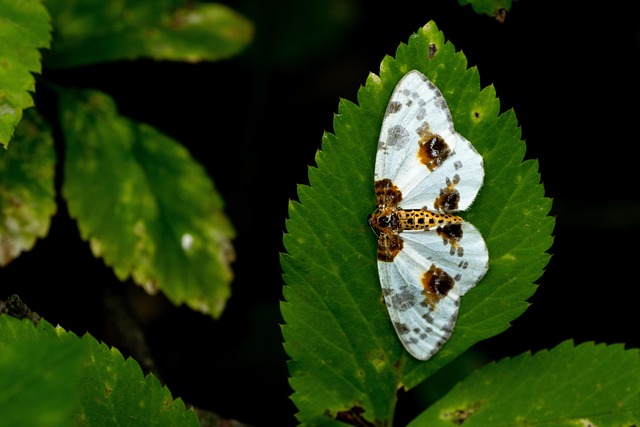Clothes moths cause significant fabric damage in storage areas, but understanding their life cycle and preference for dark spaces allows for strategic control using eco-friendly moth solutions. Traditional chemical methods pose environmental and health risks, prompting a shift towards non-toxic alternatives like pheromone traps, lavender/cedar oil, parasitic wasps, sensitive sensors, non-toxic baits, and laser treatments. These innovative, effective eco-friendly moth solutions are gaining popularity in modern homes due to their safety, gentleness on fabrics, and benefit for the ecosystem.
“Unraveling the battle between your garments and destructive moths, this article explores advanced technologies revolutionizing pest control. Clothes moths, known for their insidious nature, cause significant damage. Traditional methods often involve harmful chemicals, prompting a shift towards eco-friendly alternatives. We delve into innovative solutions like pheromone traps, ionization devices, and natural repellents, offering effective moth detection and treatment without environmental harm. Discover how these green moth solutions are transforming home protection, ensuring your wardrobe remains moth-free naturally.”
Understanding Clothes Moths: Behavior and Damage
Clothes moths are tiny yet formidable pests that can wreak havoc on textile collections. Understanding their behavior is crucial in implementing effective control measures, especially when considering eco-friendly moth solutions. These moths, often belonging to the family Tineidae, are attracted to dark and undisturbed areas within closets, attics, or storage spaces. They feed on natural fibers like wool, silk, cotton, and linen, leaving behind visible damage characterized by holes, tunnels, and webbing. This behavior can result in significant fabric degradation over time.
Recognizing their life cycle is essential for strategic treatment. From egg to adult, clothes moths undergo metamorphosis, with larvae spinning cocoons before emerging as adults. This understanding prompts targeted interventions, from sealing entry points to using pheromone traps that disrupt mating patterns. Eco-friendly moth solutions can include natural repellents like lavender and cedar oil, as well as biological control methods involving parasitic wasps that prey on moth larvae.
Traditional Moth Control Methods and Their Drawbacks
Traditional methods for controlling clothes moths often rely on toxic chemicals, which can be harmful to both the environment and human health. These methods include spraying insecticides and using mothballs, which release toxic fumes to repel or kill moths. While effective in the short term, they have several drawbacks. First, these chemicals can leave residue on fabrics, potentially damaging them over time. Second, they are not selective, meaning they can also eliminate beneficial insects like dust mites and even impact indoor air quality. As a result, many individuals and businesses are seeking more sustainable, eco-friendly moth solutions to ensure the preservation of fabrics while minimizing environmental and health risks.
Advanced Eco-Friendly Technology for Effective Moth Detection and Treatment
In recent years, the demand for eco-friendly moth solutions has grown as consumers become more conscious of the environmental impact of traditional pest control methods. Advanced technologies are now available that offer both effective moth detection and treatment while minimizing the use of harmful chemicals. These innovations leverage a combination of sensitive sensors, non-toxic baiting systems, and targeted laser treatments to identify and eliminate clothing moths without damaging fabrics or leaving behind hazardous residues.
For instance, some cutting-edge systems employ pheromone detectors that can pick up even trace amounts of moth pheromones, enabling early detection and precise targeting. Additionally, eco-friendly baits made from natural ingredients attract and trap moths humanely, preventing them from laying eggs and causing further damage. Furthermore, laser treatments, when used in conjunction with these methods, offer a safe and non-invasive way to disrupt the moths’ natural behavior, effectively curbing their ability to breed and infest textiles.
Implementation and Benefits of Green Moth Solutions in Modern Homes
In recent years, the implementation of green or eco-friendly moth solutions has gained significant traction in modern homes, marking a shift from traditional chemical-based pest control methods. These innovative approaches not only offer effective protection against clothes moths but also contribute to a safer and more sustainable living environment. By leveraging natural repellents, plant-derived compounds, and biological controls, green moth solutions provide an alternative that minimizes the use of harmful chemicals.
One of the key benefits is their gentle yet potent action against clothing pests. These eco-friendly methods can effectively deter moths without leaving behind toxic residues, making them ideal for homes with children, pets, or individuals concerned about exposure to synthetic chemicals. Moreover, green moth solutions are designed to be environmentally conscious, breaking the cycle of chemical reliance and promoting a healthier, more balanced ecosystem within the home.
In conclusion, advanced eco-friendly technology offers a revolutionary approach to detecting and treating clothes moths, providing effective yet gentle solutions for modern homes. By understanding the behavior and damage caused by these pests, we can implement green methods that eliminate the need for harsh chemicals. Eco-friendly moth solutions not only protect our belongings but also contribute to a healthier environment, ensuring a sustainable future for both homes and nature.
